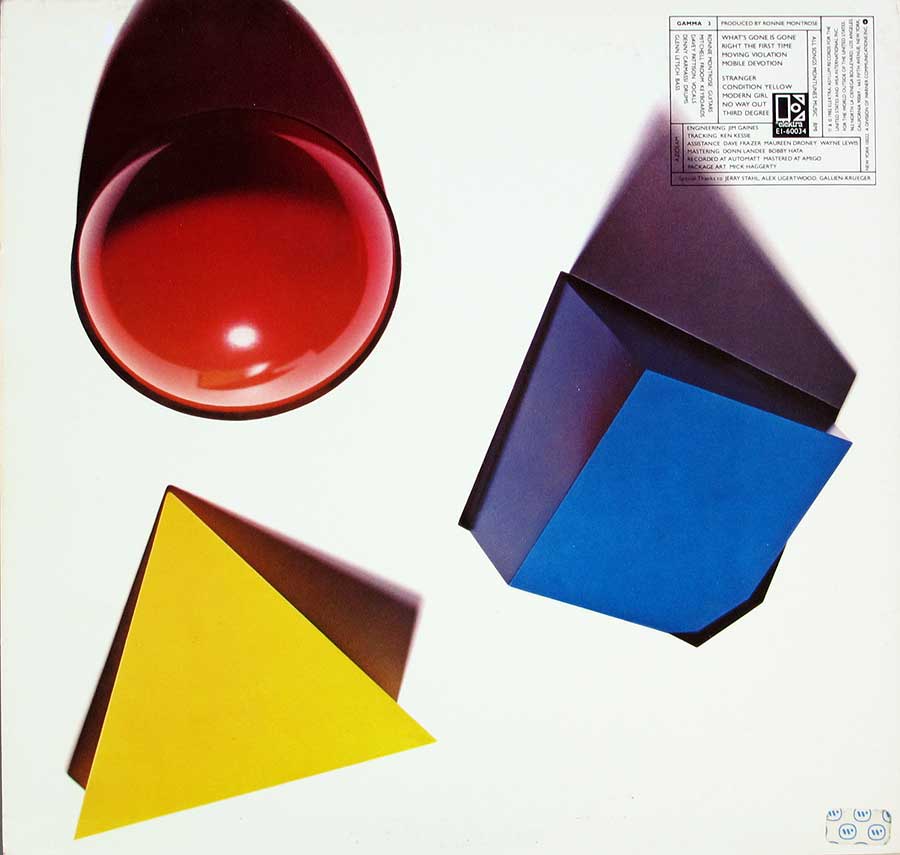"GAMMA 3 With Ronnie Montrose" (1982) Album Description:
This record catches Gamma right at the moment when American rock was sliding from 70s grit into sleek early-80s shine, and Ronnie Montrose decided to ride that wave instead of fighting it. It’s still guitar-first and muscular, but there’s a cool, neon-lit tension in the songs that makes the album feel like late-night highway music rather than bar-brawl rock.
1982: Neon Years, Big Hair, Bigger Choruses
In 1982, rock in the USA was living on a strict diet of FM radio, stadium echo and MTV’s fresh glow. Bands like Toto, Asia and the more polished side of Journey were proving that riffs and radio hooks could happily share the same bed. Gamma 3 slots into that world as the veteran’s answer: a record by players who already survived the 70s and were now reshaping their sound for a glossier era without totally sanding off the edges.
How Gamma Ended Up Here
By the time this album rolled around, Montrose had already done the hard miles: the early days with Edgar Winter, the classic Montrose band, and then this more streamlined Gamma project. With Davey Pattison on vocals, Mitchell Froom on keys and a locked-in rhythm section, Gamma felt like a proper 80s rock machine rather than a loose 70s jam crew. Recording at The Automatt in San Francisco, the band sound like they knew exactly what they wanted: tighter songs, sharper production, fewer wasted bars.
The Sound: Tight, Polished, Still Biting
Sonically, this album lives in that sweet spot where the guitars still crunch, but the mix has a clean, almost surgical clarity. Pattison’s vocals ride on top, confident and melodic, while Froom sneaks in keyboard textures that give the songs a slightly futuristic, urban feel instead of dusty barroom haze. It’s the kind of record where you can feel the kick drum in your chest, but the choruses are clearly built to stick in your head on the drive home.
Tracks like "What’s Gone Is Gone" feel like a mission statement, stretching out with enough space for Montrose to lean into those expressive lead lines. "Mobile Devotion" has that slow-burn, late-night energy, the kind of song that makes you stare at the spinning label a little longer. On the flip side, shorter cuts such as "Stranger" and "Condition Yellow" snap harder and faster, like they’re built for rock radio but still carry that slightly restless Gamma DNA.
Stacked Against Its 1982 Neighbours
Put this next to something like Asia’s debut or Toto IV, and you feel how much more guitar-forward Gamma 3 really is. It doesn’t have the glossy pop sheen or big pop ballads; instead it leans on groove, riffs and a drier, more focused vocal attack. Compared to the heavier end of 1982 rock like Scorpions – Blackout, Gamma sound less arena-metal and more like a precision strike: shorter bursts of intensity instead of full-blown assault.
Mini-Controversies: Too Polished or Just Right?
This album never sparked any cover bans or TV outrage, but among fans you can feel that low-key split: some older Montrose diehards heard this and muttered that it was “too 80s,” too polished, not wild enough. Others loved the fact that the band finally leaned fully into hooks and structure instead of getting lost in the weeds. It’s not a scandal album; it’s a “play it again and argue about it over beers” kind of record.
Inside the Band: Veterans Chasing a Sharper Future
You can almost hear the internal balancing act: Montrose pushing for guitar authority, Froom bringing colour and modern gloss, and the rhythm section keeping everything tight so the songs never sag. It feels like a band that knows time is short and the industry is changing fast, so there’s no room for indulgent solos “just because.” Instead you get a slightly tense, grown-up Gamma, still hungry but more strategic about where to punch.
Reception, Replays and Collector Gravity
Back in the day, Gamma 3 never became a monster-seller, which honestly fits its vibe: it’s one of those “if you know, you know” early-80s rock albums that lives in the shelves of people who dig a little deeper than the usual radio hits. Critics were lukewarm to respectful, but guitar fans and Montrose devotees quietly kept this one alive. Decades later, it plays like a time capsule of a very specific moment where hard rock, AOR and studio polish collided under red Elektra labels.


